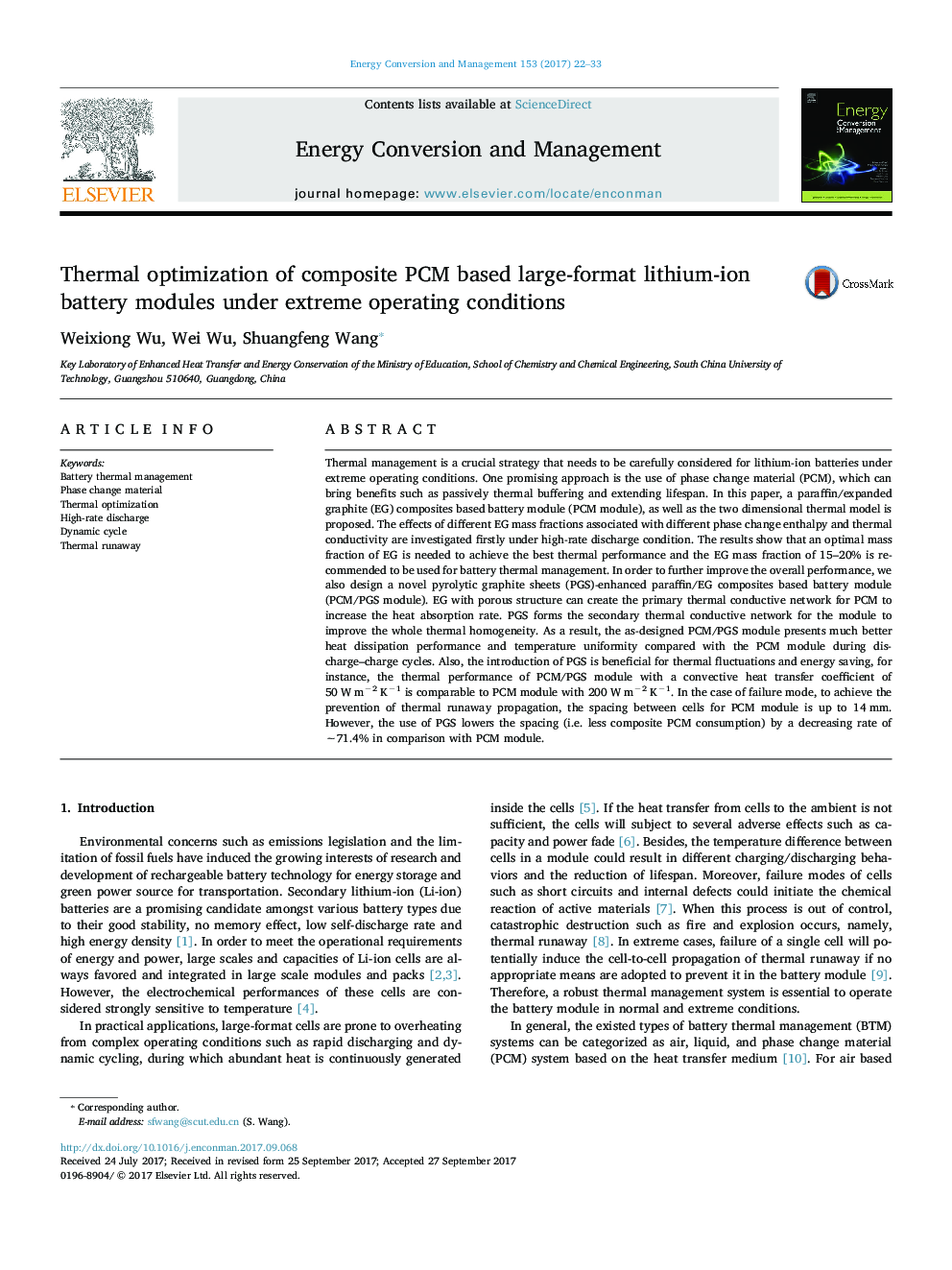| کد مقاله | کد نشریه | سال انتشار | مقاله انگلیسی | نسخه تمام متن |
|---|---|---|---|---|
| 5012185 | 1462809 | 2017 | 12 صفحه PDF | دانلود رایگان |
عنوان انگلیسی مقاله ISI
Thermal optimization of composite PCM based large-format lithium-ion battery modules under extreme operating conditions
دانلود مقاله + سفارش ترجمه
دانلود مقاله ISI انگلیسی
رایگان برای ایرانیان
کلمات کلیدی
موضوعات مرتبط
مهندسی و علوم پایه
مهندسی انرژی
انرژی (عمومی)
پیش نمایش صفحه اول مقاله

چکیده انگلیسی
Thermal management is a crucial strategy that needs to be carefully considered for lithium-ion batteries under extreme operating conditions. One promising approach is the use of phase change material (PCM), which can bring benefits such as passively thermal buffering and extending lifespan. In this paper, a paraffin/expanded graphite (EG) composites based battery module (PCM module), as well as the two dimensional thermal model is proposed. The effects of different EG mass fractions associated with different phase change enthalpy and thermal conductivity are investigated firstly under high-rate discharge condition. The results show that an optimal mass fraction of EG is needed to achieve the best thermal performance and the EG mass fraction of 15-20% is recommended to be used for battery thermal management. In order to further improve the overall performance, we also design a novel pyrolytic graphite sheets (PGS)-enhanced paraffin/EG composites based battery module (PCM/PGS module). EG with porous structure can create the primary thermal conductive network for PCM to increase the heat absorption rate. PGS forms the secondary thermal conductive network for the module to improve the whole thermal homogeneity. As a result, the as-designed PCM/PGS module presents much better heat dissipation performance and temperature uniformity compared with the PCM module during discharge-charge cycles. Also, the introduction of PGS is beneficial for thermal fluctuations and energy saving, for instance, the thermal performance of PCM/PGS module with a convective heat transfer coefficient of 50Â WÂ mâ2Â Kâ1 is comparable to PCM module with 200Â WÂ mâ2Â Kâ1. In the case of failure mode, to achieve the prevention of thermal runaway propagation, the spacing between cells for PCM module is up to 14Â mm. However, the use of PGS lowers the spacing (i.e. less composite PCM consumption) by a decreasing rate of â¼71.4% in comparison with PCM module.
ناشر
Database: Elsevier - ScienceDirect (ساینس دایرکت)
Journal: Energy Conversion and Management - Volume 153, 1 December 2017, Pages 22-33
Journal: Energy Conversion and Management - Volume 153, 1 December 2017, Pages 22-33
نویسندگان
Weixiong Wu, Wei Wu, Shuangfeng Wang,